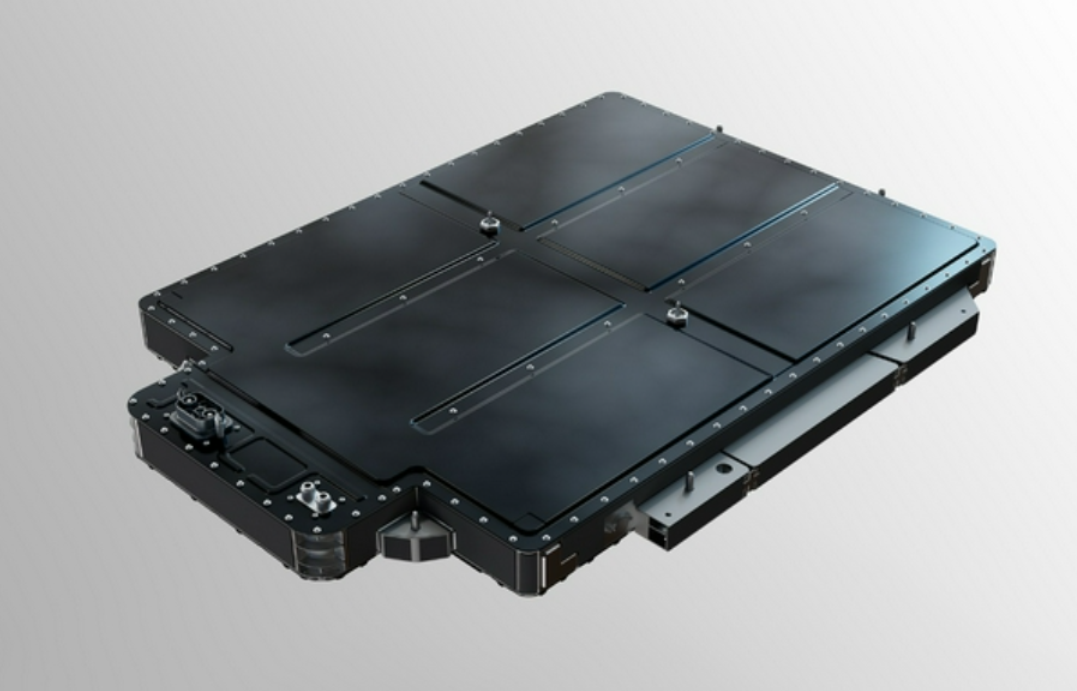Battery System Technology of Vehicle and Battery Companies
Author: Lingfang Wang
Editor: Kaijun Qiu
Both vehicle and battery companies have placed battery system development in an important position.
Since Ningde Times introduced the CTP battery pack technology in 2019, battery companies and car companies have continuously developed battery system technologies, placing emphasis on solving thermal runaway and simplifying structure.
Preventing thermal runaway solves safety problems, while simplifying the structure is a response to the demand for increased energy density of battery systems.
“Electric Vehicle Observer” has compiled a list of well-known battery systems in the market. Each company has different focuses, with slightly different problem-solving strategies.
Some battery systems show their focus from their names:
For example, battery systems with names like “magazine”, “amber” and “mica” have a focus on wrapping and blocking, emphasizing the prevention of thermal runaway. Wrapping and insulation are the main objectives, followed by heat exchange through cooling systems.
Other companies mainly simplify the structure of their battery packs to the utmost while ensuring structural strength, such as the CTB structure of blade batteries and the Kirin battery of CTP3.0. Some companies still follow the module path, such as honeycomb batteries, magazine batteries, the Dayu Battery, Aoteng Energy’s battery, and the CTC of Leapmotor (which is actually integrated into the chassis).

“Electric Vehicle Observer” has sorted out the focus and problem-solving strategies of different companies’ battery systems for you.
How to Prevent Thermal Diffusion
Solving thermal diffusion is the focus of battery pack technology. From the release of battery pack technology, it can be seen that some companies focus on blockage while others focus on a combination of blockage and clearance.
(1) Battery Systems with Blocking as the Main Focus: magazine, amber, mica, Tiangong, and honeycomb
According to “Electric Vehicle Observer,” Guangzhou Automobile’s Magazine Battery, Voyah’s Amber and Mica Batteries, and NETA’s Tiangong Battery all focus relatively more on blockage, isolating battery cells into a relatively safe chamber before using a cooling system to address thermal runaway.
The magazine battery constructs a safety chamber with a mesh-like, nanoporous insulating material and a heat-resistant upper shell, ensuring that thermal runaway of battery cells does not spread. The selected insulating material is a soft nano-material based on silicon dioxide with a pore size of about 20 nanometers, where air cannot flow, making it difficult for heat to conduct to the outside through air.
The upper shell of the magazine battery is heat-resistant at temperatures above 1400℃, controlling heat within a relatively controllable range.
GAC has designed a thermal conduction path inside the battery pack to allow for heat dissipation during high temperatures (when the pressure inside the battery pack is too high, the pressure relief valve will balance the battery pack). The heat will flow inside the battery pack and cool down with the help of a large area of full-coverage liquid cooling system, regulating the temperature to a safe range.
According to GAC, their 3D thermal conduction system, together with the full-coverage thermoelectric-hydraulic module, wider thermal conduction pipeline, and heat dissipation channel, can increase the heat dissipation area by 40% and improve heat dissipation efficiency by 30%.

Voyah’s battery system features a 3D thermal insulating wall technology, with pure electric vehicle battery systems called “Amber” and extended-range vehicle battery systems called “Muscovite”.
The biggest difference between the two battery systems lies in their materials and insulation methods. The Amber battery system is filled with organic silicon composite material inside the battery pack, wrapping cylindrical cells like “amber”, while Muscovite uses high-temperature resistant mica sheets stacked with foaming gel.
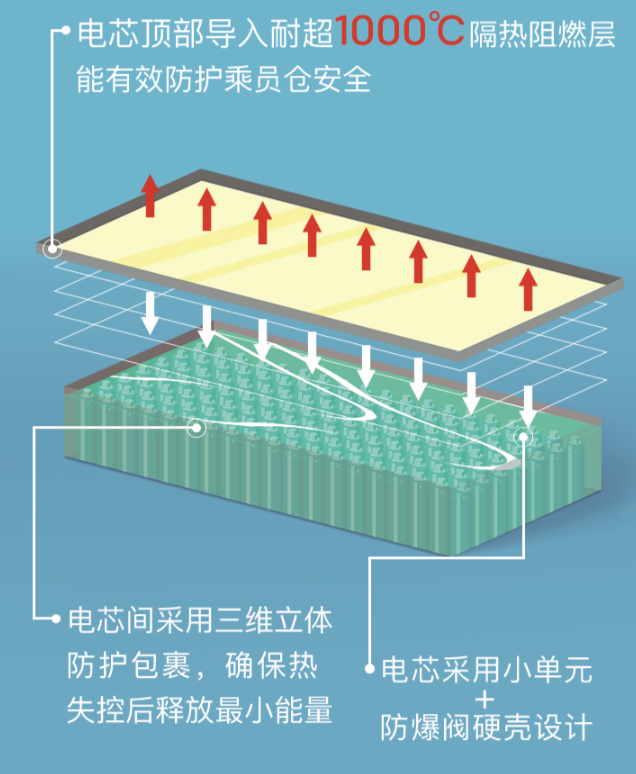
NETA’s Tiangong battery also features a compartmentalized battery pack design. NETA uses aerospace-grade flame-retardant material between battery cells, which can insulate at temperatures above 1000 degrees.
In terms of thermal management, NETA’s approach includes heat-electricity separation, directional heat dissipation, and high-temperature insulation, which are relatively conventional methods.
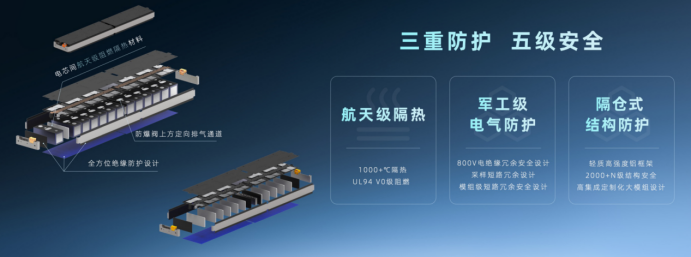
JAC’s honeycomb battery is based on cylindrical cells, with the development of a thermal runaway safety protocol.
By implementing a module electrical isolation and thermal insulation solution, energy release can be controlled after a single cell burst. In addition, adjacent modules are secured through module protection and battery pack exhaust path design, while thermal exchange is performed using a liquid-cooled flattened pipe.
Of course, both JAC’s honeycomb battery and Voyah’s amber battery use smaller cylindrical cells with relatively low energy, so the difficulty of sealing the battery system during thermal runaway is lower, and traditional cooling methods should be sufficient. Similarly, the honeycomb battery and Tesla’s 4680 CTC scheme use cylindrical cells that are very similar.From the teardown video of the Texas Tesla 4680 CTC program, the battery has become a part of the entire vehicle, and is isolated by insulation layers and heat insulation and flame-retardant layers, while cooling is carried out through a serpentine cooling tube.
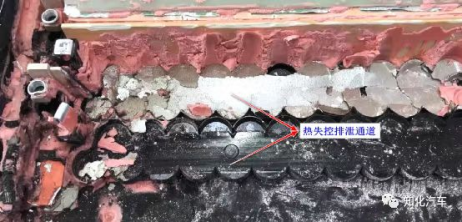
Of course, with the increased height of the 4680 battery cell, the serpentine tube also makes full use of this height.
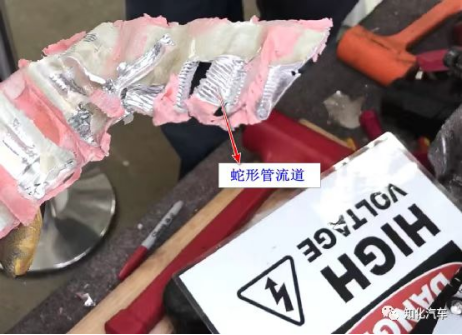
(2) “From Blockage to Smoothness,” Emphasize Smoothness – Dayu, Qilin, Rubik’s Cube
The Great Wall’s Dayu battery program primarily emphasizes smoothness and is supplemented by isolation.
In terms of isolation, the Dayu battery cell can achieve heat source isolation, and thermal protection can also be achieved between each module. High-temperature insulation composite material is used between modules to prevent flame impact and long-term heat transfer. The protective cover is designed with directional explosion outlets, which can quickly discharge high-temperature gas and flames from the module’s interior.
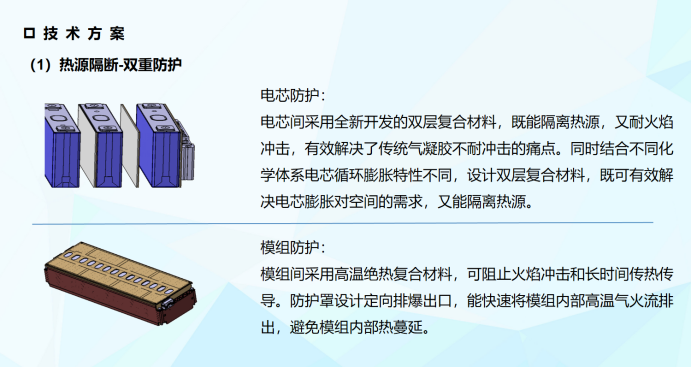
During the process of thermal runaway in the battery, a large amount of high-temperature and high-pressure gas and flames will be generated. The Dayu battery technology has realized precise design of the intensity and ratio of the inverter through simulation and modeling of various types of flow channels, effectively controlling the flow of the heat source along the predetermined trajectory, reducing the thermal impact on adjacent modules and avoiding reignition. Image source: Dayu Battery
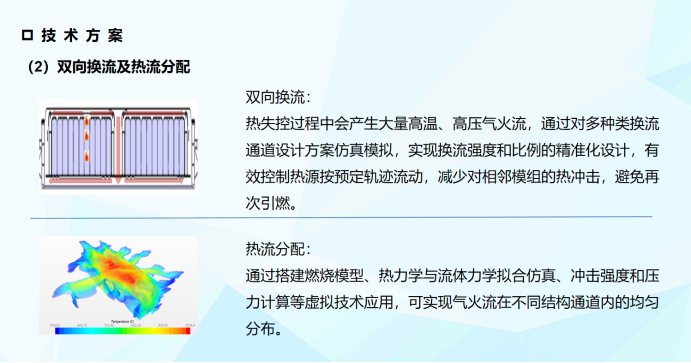
Through a large number of simulations, the intensity and ratio of the gas and flame flow are precisely designed. According to the size of the airflow intensity and the change in temperature, the heat source flows along the predetermined trajectory to avoid producing sharp heat impact on adjacent battery cells and modules, thereby preventing a second thermal runaway.
Currently, battery systems such as the honeycomb battery, clip battery, Dayu battery, and UTEN power battery still retain modules, and are far inferior to module-free batteries in terms of integration and space utilization.
The Ningde Times Qilin battery CTP3.0 version, like the Great Wall battery’s heat insulation approach, combines materials through composite technology.
However, the integration of Ningde Times is higher. The Qilin battery pack cancels the originally independent designs of the horizontal and vertical beams, the water-cooled plate, and the heat insulation pad, instead integrates them into a multi-functional elastic interlayer, and is equipped with a built-in millimeter bridge connecting device that stretches and contracts to match the breathing of the battery cells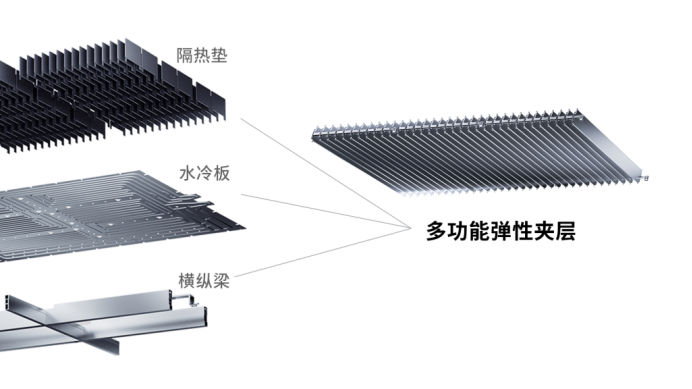
This multifunctional elastic interlayer has a certain thermal insulation effect, but at the same time, it quickly takes away heat by using a larger heat exchange area.
Of note, CATL has quadrupled the heat exchange area by placing water-cooled components at the bottom of the battery cells. This design is very friendly to high-power charging, and by cooling the battery cells on a large surface, it shortens the battery temperature control time to half of what it was before, thereby adapting to larger currents and higher voltages for fast charging. Currently, the Kirin battery can support rapid heat-up start in 5 minutes and fast charging up to 80% in 10 minutes.
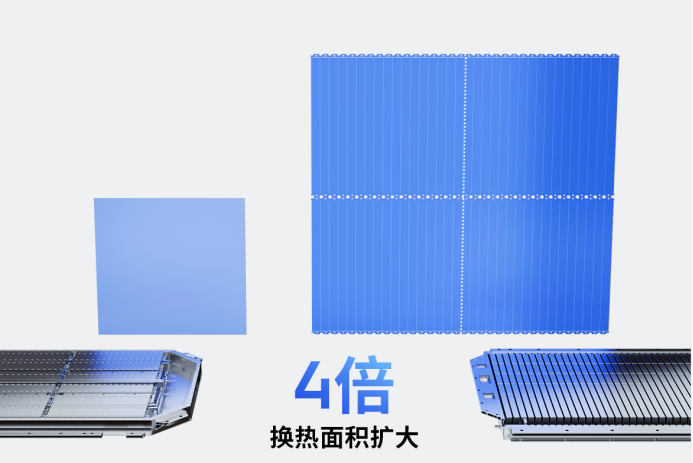
The advantage is that the battery cells can rapidly cool down in extreme situations. The multifunctional elastic interlayer effectively blocks the abnormal heat conduction between the battery cells, can avoid irreversible damages caused by the battery’s non-normal working temperature, and effectively improves the life and safety of the battery cells.
SAIC’s Magic Cube battery is also mainly based on thermal dissipation. The battery cells of SAIC are laid flat and consist of only two layers of cells, so once a cell loses control, it will only spread to the cells with a larger contact area above and below it, and take away some of the heat through the water cooling system.
As the contact area of the cells on both sides is small and protected by thermal insulation materials, the probability of thermal runaway of the battery cells is greatly reduced, so the overall thermal runaway of the battery cells is controllable and will not cause the domino effect.

In summary, due to the large contact area between the upper and lower cells, once thermal runaway occurs, it sacrifices the cells above or below at the cost of reducing the heat conduction on the left and right sides, and then uses the vertical cooling components to conduct and dissipate the heat.
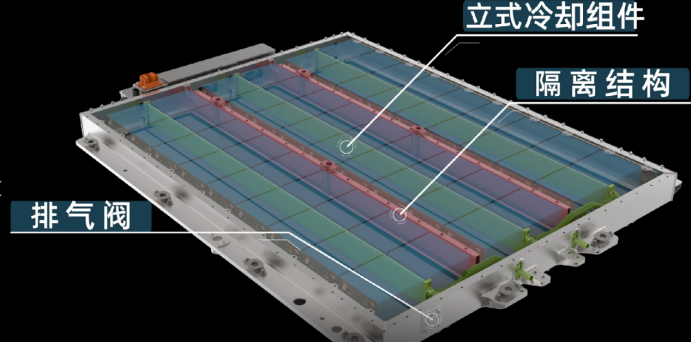
The battery companies and automakers consider the safety of the battery from the system level, and the energy density of the battery should also be considered from the system level. Simplifying battery pack structures and gradually moving towards integrated whole-vehicle batteries are the development trend.
Currently, it appears that battery packs from companies such as Freyr, StoreDot, SVOLT, CATL, Envision AESC, and Zeekr, etc., still have a module structure. The structure of these battery packs has not been significantly simplified.Currently, there are no module structures in sight, with blade CTB structures, CATL batteries, and SVOLT batteries as representatives, especially with BYD and CATL in the forefront.
BYD is the first to achieve “Cell to Body” (CTB) integration, further combining the battery cover with the vehicle floor.

This means that the original battery sandwich structure has evolved into an entire vehicle sandwich structure, effectively reducing the vertical space occupied by the battery on the vehicle, increasing the vertical seating space by 10mm under the same vehicle height, and further releasing the potential for improved interior space.
In a Z direction (i.e., vertical direction) where height is valuable, 10mm is significant.
Of course, its advantages are not limited to this. The force is more even, and vehicle safety is improved, which will be further explained in later text.
Another leading technology is CATL’s CTP3.0 SVOLT battery. From the perspective of battery pack integration, no one is currently surpassing it. The volume utilization rate of the battery pack can reach up to 72%, and the highest energy density can reach 255Wh/kg, allowing the vehicle to achieve more than 1,000 kilometers of range.
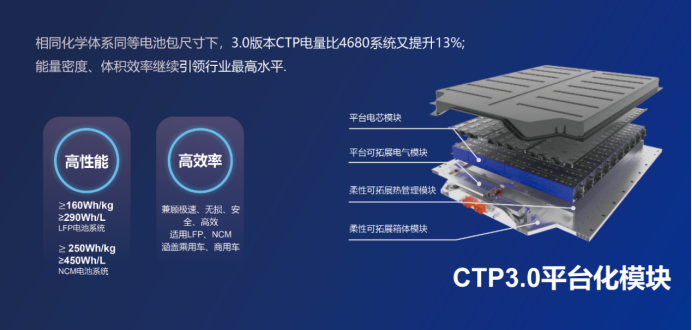
The high integration of SVOLT’s battery pack is mainly due to the integration of the battery pack’s horizontal and vertical beams, water-cooling plate, and thermal insulation pad, which effectively increases the space for placing battery cells inside the battery pack.
SVOLT batteries also try to simplify materials to make more space for the battery cells, such as this horizontal arrangement, which can also maximize the use of thermal insulation materials. For example, instead of requiring six insulation materials like before, only two are now required. Most of the space can be used to contain effective electrochemical materials.
Of course, benefiting from the horizontal arrangement of the battery cells, it is possible to move more outwards (in the vehicle width direction) in the vehicle, achieving improved battery pack integration without sacrificing battery capacity.
Currently, it seems that CATL and BYD’s CTP technology has completely eliminated the horizontal and vertical beams of the battery pack. However, BYD’s CTB structure, SAIC’s SVOLT battery, and Tesla’s CTC structure still retain structural beams. From the structural diagrams, BYD has one horizontal and vertical beam, SVOLT battery has two, and Tesla’s CTC structure apparently has three horizontal beams.
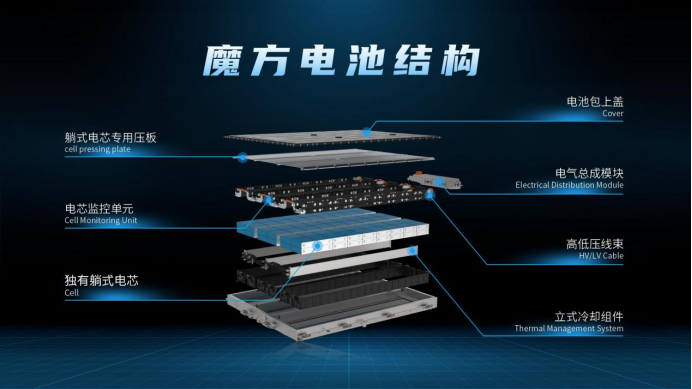
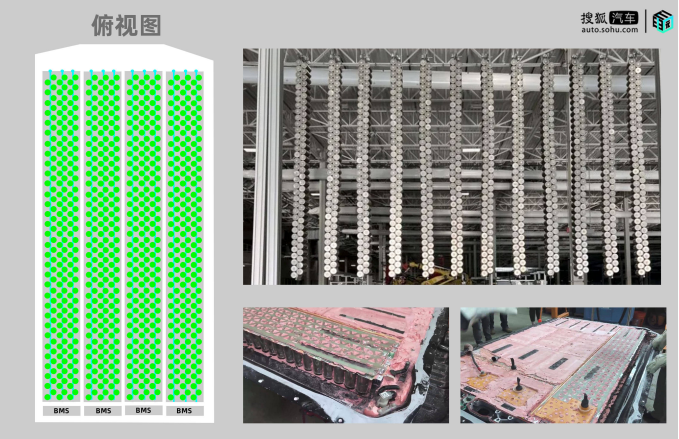
The entire 4680 structural battery pack of Tesla is divided into four regions by three cross beams, meaning that there are roughly three cross beams.
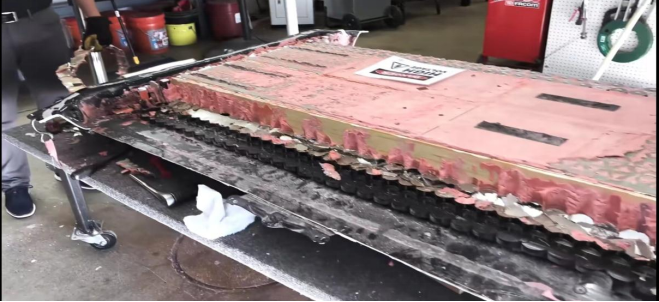
Of course, cross and longitudinal beams cannot be arbitrarily removed, depending on whether the structural strength of the battery pack ensures cell safety in the absence of beams.
Currently, the degree of simplification of the battery pack structure of CATL is relatively high.
How about the structural strength
Besides repair, the biggest concern about non-module battery packs is whether the structural strength is sufficient to protect the cell’s safety.
This is because non-module battery packs often simplify the cross and longitudinal beams that provide support.
Traditional battery packs usually have 4-5 beams, as shown in the case of AT Batteries, where the battery pack structure has very clear cross and longitudinal beams.
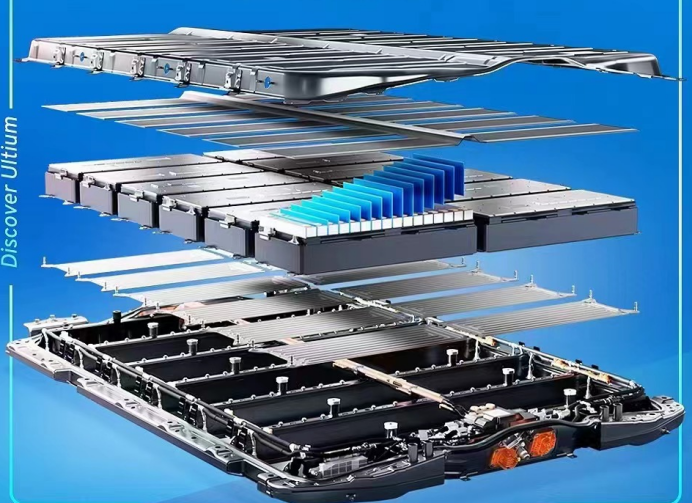
Cross and longitudinal beams are used to interweave the entire three-dimensional structure of the battery pack, which sufficiently decomposes and absorbs collision energy from the outside.
In the BYD blade battery CTP structure, not only did the module be simplified, but also the cross and longitudinal beams in the battery pack were simplified. BYD makes each cell serve as a structural component, so if there are 100 cells, there will be 100 beams, the strength of which can be imagined.
The blade battery CTP structure also borrows from the very mature structural principles of honeycomb aluminum panels. On the two sides of the battery stack consisting of 100 cells, two high-strength plates are pasted to form a honeycomb aluminum-like structure, which further enhances the strength.
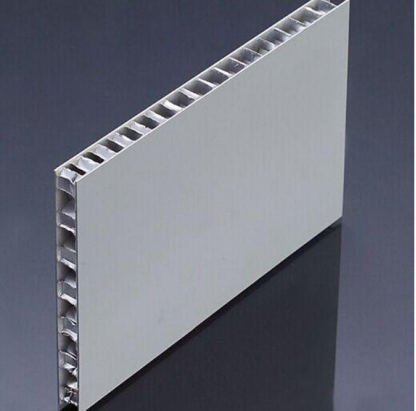
This idea is also used in BYD’s CTB technology. CTB technology makes the blade battery form a sandwich structure similar to honeycomb aluminum panels by bonding with the tray and upper cover, with long and narrow blade cells densely distributed in the battery pack, uniformly subjected to force, greatly improving the structural strength of the battery pack.
In addition, in the structural design of traditional electric vehicles, in order to protect the safety of the battery, the vehicle power transmission structure is broken, which leads to poor transmission of power in extreme collision situations, and the safety risks are increased.On BYD e Platform 3.0, the left and right sides of the body floor beam are interconnected, and a closed-end rolling design is adopted, greatly enhancing the energy transfer capability and structural stability of the vehicle in side collisions. At the same time, benefited from the high safety blade battery and the battery pack-like honeycomb aluminum structure, the battery can be an important part of the power transmission structure, transmitting and absorbing energy, thereby improving vehicle safety.
CATL’s Kirin Battery considered strength issues within the battery pack. The structural strength of the Kirin Battery also relies on its multi-functional elastic interlayer. The elastic interlayer can also act as a force-bearing structure. The battery cell and the multi-functional elastic interlayer form an integrated energy unit, becoming the force-bearing structure in the driving direction, thereby improving the structural strength and impact resistance of the battery.
According to the “Electric Vehicle Observer,” the Tesla CTC battery pack is supported by structural beams, and a large amount of glue also supports and protects the battery cells. Interestingly, the Tesla CTC battery cell structure is not directly integrated with the bottom of the battery pack, but is placed on a mica support, and according to the person who disassembled the video, the mica support is not connected to the bottom box through glue.
“ZHICHEAUTOS” believes that direct bonding of the battery cell and the bottom box to form a honeycomb structure is a stronger solution.
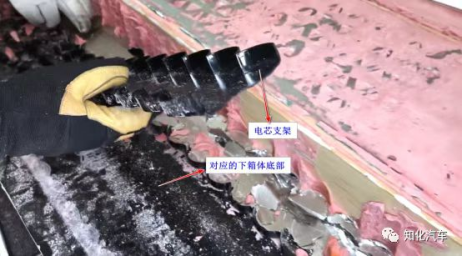
Skillful Placement of Batteries
In addition to the design of the battery pack structure, automakers and battery companies also spend a lot of effort on the placement of battery cells. For example, SAIC’s Rubik’s Cube Battery is characterized by its lying cell design.
CATL CTP3.0’s Kirin Battery cell is inverted.
In general, the height utilization rate of vertical battery cells is not very high due to the thickness of the top cover of the battery cell body, the distance from the bottom of the top cover to the diaphragm, and the thickness of the bottom support plate.
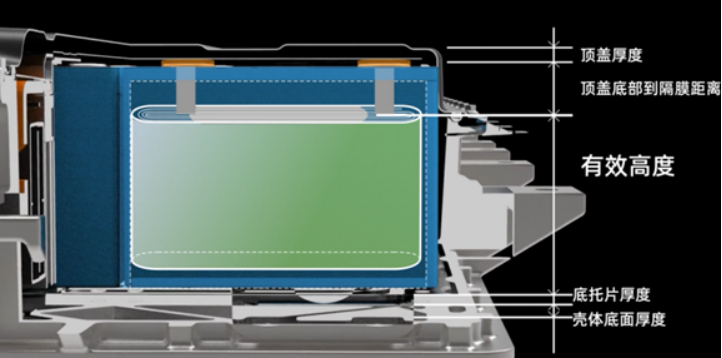
The lying cell design of Rubik’s Cube Battery effectively addresses this issue, not only fully utilizing the height direction of the battery pack, but also significantly increasing the proportion of active materials in the battery, leading to a significant improvement in volume utilization rate.
JAC’s honeycomb battery also uses horizontal cell placement, which is a common placement form for cylindrical battery cells.
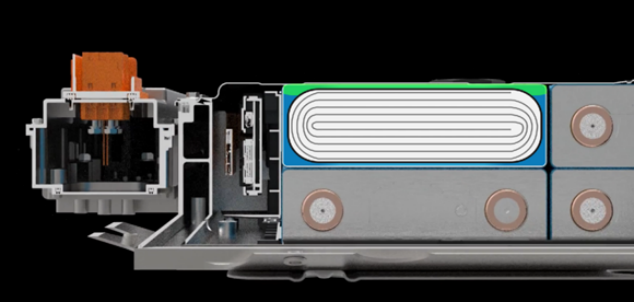
It is clear that the inverted cell placement of CATL’s Kirin Battery has a higher space utilization rate than the lying cell battery pack.
Inverted cell placement allows room for spontaneous venting and bottom ball impact in the same space, leaving an additional 6% of space for the battery cells.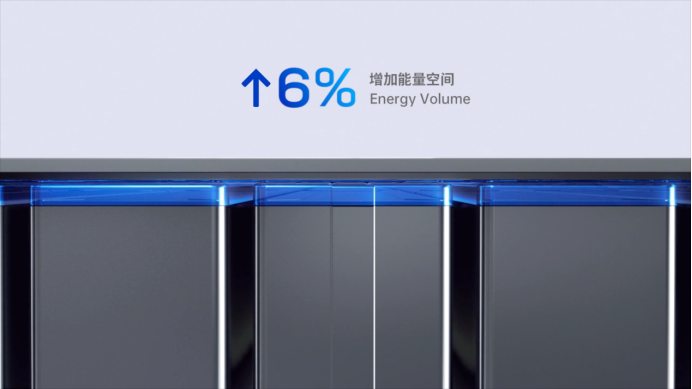
The utilization rate of the Kirin battery pack from CATL can reach as high as 72%, which should be higher than the cube-shaped battery pack from SVOLT, in terms of space utilization.
Currently, in terms of battery pack systems integration, BYD and CATL have the biggest advantages. However, the problem with BYD is that its blade cell is a non-standard cell, and its advantage in scale is not obvious. In contrast, CATL can achieve scale advantage through standardized cells.
In addition, BYD’s blade cell structure is more suitable for lithium iron phosphate cells, relying on the higher thermal stability of the material. But when it comes to the field of high-nickel three-element cells, the large surface contact and fast heat conduction speed of the cell make the advantages of the cell’s length and width turn into disadvantages.
CATL’s latest generation of CTP3.0 Kirin battery pack can currently use all mainstream chemical systems, including sodium-ion batteries.
However, BYD’s CTB structure has achieved the integration of the battery pack and vehicle body one step ahead of CATL, which is more advanced in terms of the integrated angle from the whole vehicle to the battery.
As there is relatively little information available on Tesla’s 4680 CTC structure, it is difficult to make a judgment. As things stand, CATL and BYD are more systematic in their designs of battery systems, and they are indeed in the leading position in the industry.
——END——
This article is a translation by ChatGPT of a Chinese report from 42HOW. If you have any questions about it, please email bd@42how.com.
